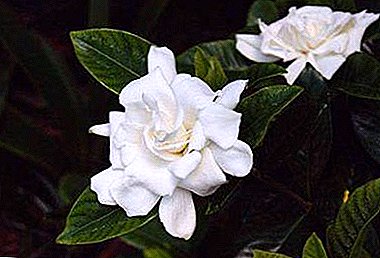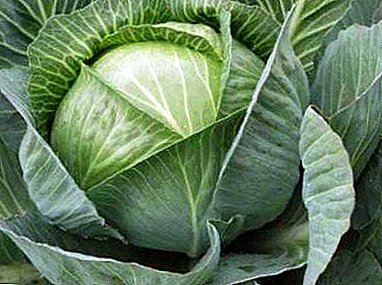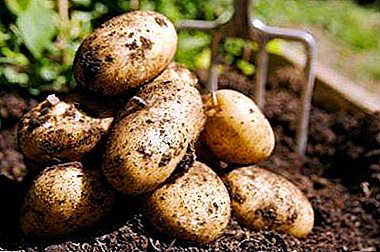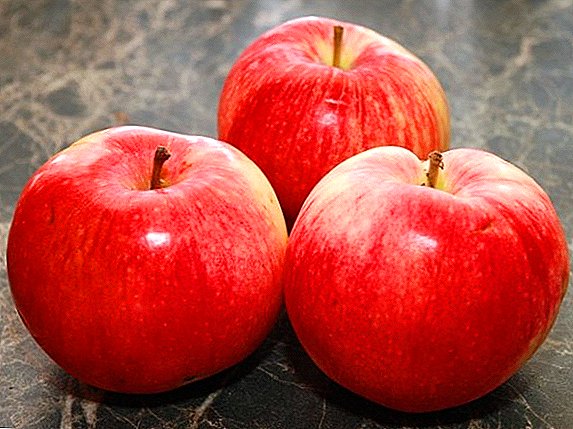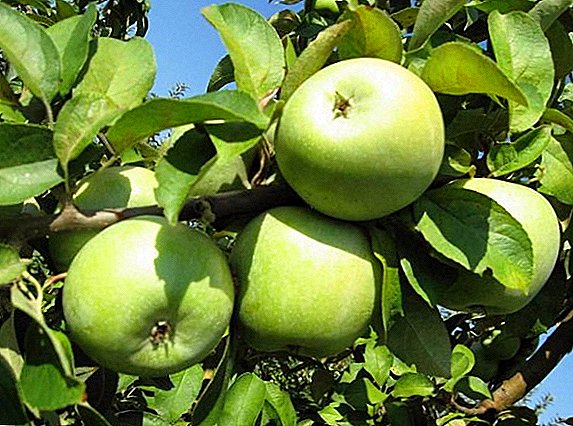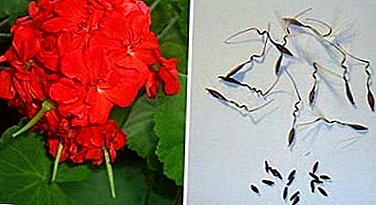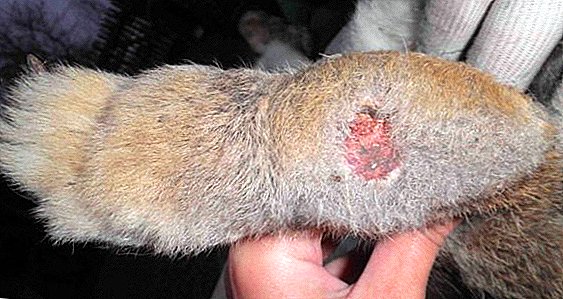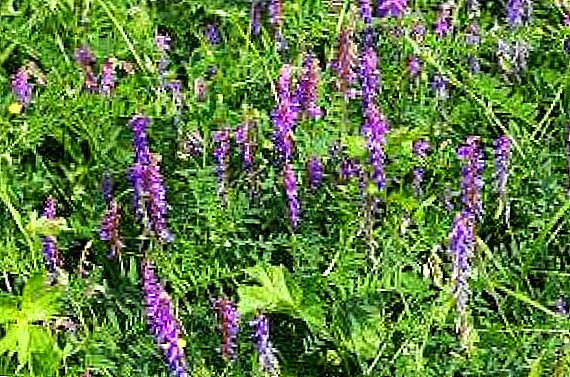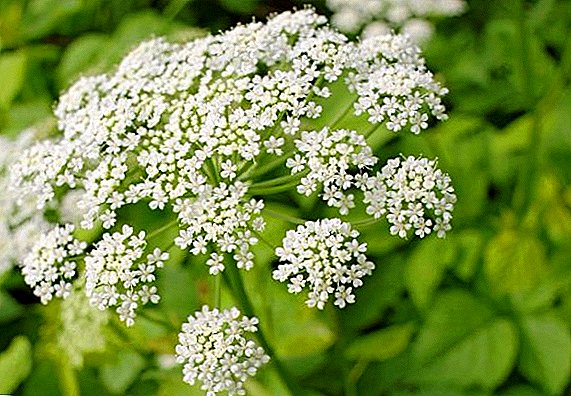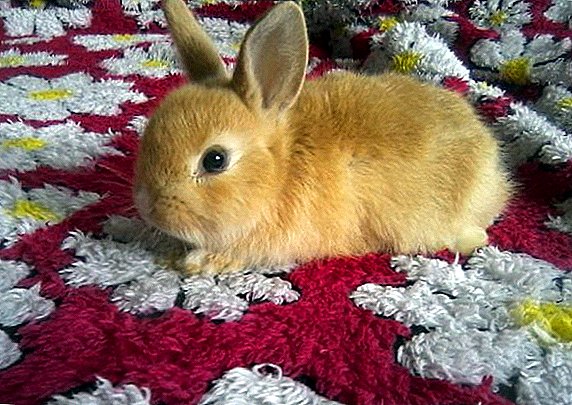 Decorative rabbits today are among the most popular pets. Every year thousands of animals find their owner and become not only the decoration of the house, but also real family members. However, for most, the acquisition of such an animal is a kind of lottery: the rabbit becomes a source of unpleasant odor in the house, which negatively affects the general sanitary situation. Today we will take a closer look at the main causes of unpleasant odors that occur in the cage of these animals, and also explain how to properly deal with this problem.
Decorative rabbits today are among the most popular pets. Every year thousands of animals find their owner and become not only the decoration of the house, but also real family members. However, for most, the acquisition of such an animal is a kind of lottery: the rabbit becomes a source of unpleasant odor in the house, which negatively affects the general sanitary situation. Today we will take a closer look at the main causes of unpleasant odors that occur in the cage of these animals, and also explain how to properly deal with this problem.
Do decorative rabbits stink?
It is this question that is one of the most common issues that consumers have at a pet store when they buy a rabbit. And often the answer to it directly affects the acquisition of the animal. Therefore, for many it becomes a real discovery of the fact of the almost complete absence of any possible specific odors in this fluffy animal.
Check out the most popular breeds of ornamental rabbits: Squirrel, lionhead, colored dwarf and Viennese blue.
By nature, all members of the Zaitsev family are herbivores. A variety of non-aromatic plants, herbs, vegetables, fruits and other plant components act as natural food for these animals.  As a result, complex aromatic compounds do not accumulate in the body of these animals, which, due to metabolism, cause the production of physiological fluids with an excessively strong or unpleasant odor.
As a result, complex aromatic compounds do not accumulate in the body of these animals, which, due to metabolism, cause the production of physiological fluids with an excessively strong or unpleasant odor.
Did you know? Decorative rabbits were artificially bred in the 1870s in the UK.
In addition, one should not forget that, by nature, rabbits are close relatives of wild hares. As is known, these animals are often prey for various predators, therefore, as a result of natural evolutionary processes, this fur-bearing group of animals almost completely lost their ability to emit specific odors, by which they can be easily found by a predator.
This feature also passed on to decorative rabbits. That is why a healthy rabbit can not cause unpleasant odors in the apartment. 
Why does the rabbit stink
In most cases, an unpleasant smell from a cage with a rabbit may result from the development of a complex infectious and inflammatory disease in an animal, or it may arise as a result of an untimely cleaning of the cage, feeder or drinker. Next, we consider in detail the main causes of unpleasant smells from the rabbit cage, as well as the main ways to combat them.
Improper care
At its core, the breeding of fur animals involves the maintenance of such pets in a strictly limited space. As a result, feeding, sleeping and excretion of waste products of such animals occurs in one small area.
We advise you to consider all aspects of the correct content of decorative rabbits in the apartment.
That is why the rabbit cage must be thoroughly cleaned from a variety of food debris, feces, as well as timely litter replacement. If this requirement is not observed, natural decomposition of organic residues develops in the cell, which cause unpleasant odors.  In addition, do not forget about the physiological features of the body of male individuals. By their nature, males are prone to secrete a special enzyme that is produced by the perianal glands.
In addition, do not forget about the physiological features of the body of male individuals. By their nature, males are prone to secrete a special enzyme that is produced by the perianal glands.
This is a natural norm for almost all land animals, therefore when an excessive amount of such compounds accumulate due to irregular harvesting, even an inert bedding begins to emit a strong unpleasant odor.
Feed
As you know, in the diet of rabbits often use several types of food, among which you can find dry, wet, and also concentrated. Often, when feeding with dry food, pet owners do not have any problems, however, with the introduction of concentrated feed into the diet, things are not so smooth.  This type of food is a grain soaked in water of all kinds of grain crops, products of grain production (bran, oilcake, meal), as well as silage.
This type of food is a grain soaked in water of all kinds of grain crops, products of grain production (bran, oilcake, meal), as well as silage.
Agree, for rabbits you need a complete balanced diet. Read about how to feed an ornamental rabbit at home.
Such products are a favorable environment for the development of diverse groups of bacteria and fungi. Therefore, if non-compliance with the shelf life and general sanitary requirements for the preparation of food, such food becomes a source of unpleasant odor, which often scares the animals themselves.
In addition, the late cleaning of the feeder from the remnants of food can also cause unpleasant odors in the cage, as well as serious infectious lesions of rabbits.  Also, do not forget that the appearance of the sharp aromas from the rabbit cage is also affected by the diet of the animal. With poor and unbalanced diet (especially during cold periods of the year) there are a variety of disorders in the gastrointestinal tract, which lead to dysfunction of the digestive system. It also leads to the enrichment of feces with a sharp and unpleasant odor.
Also, do not forget that the appearance of the sharp aromas from the rabbit cage is also affected by the diet of the animal. With poor and unbalanced diet (especially during cold periods of the year) there are a variety of disorders in the gastrointestinal tract, which lead to dysfunction of the digestive system. It also leads to the enrichment of feces with a sharp and unpleasant odor.
Puberty
As you know, during puberty in higher animals there is a serious restructuring of the body. At this time, metabolism undergoes many transformations that are associated with the natural formation of biochemical cycles.
Often this affects the hormonal system, especially in males. During this period, the formation of all the sexual characteristics of the organism, including the reproductive system.  In this regard, during puberty in males, a variety of malfunctions can occur, leading to a temporary disturbance of the metabolism of the reproductive system. This leads to the fact that the body of the rabbit produces an additional amount of a specific enzyme, with the help of which fur-bearing animals in the wild nature mark their territory.
In this regard, during puberty in males, a variety of malfunctions can occur, leading to a temporary disturbance of the metabolism of the reproductive system. This leads to the fact that the body of the rabbit produces an additional amount of a specific enzyme, with the help of which fur-bearing animals in the wild nature mark their territory.
This process is not a pathology and is temporary, therefore it often does not require human intervention.
Important! To avoid unpleasant odors from secretions secreted by the reproductive system of male rabbits, during puberty and later time, young rabbits are recommended to be neutered.
Age
The reason for the sharp offensive odors from the rabbit cage can be the age of the pet. Due to the physiological characteristics of the body during aging, irreversible transformations of the body and chronic disorders, including the excretory system, occur.  As a result, animals experience age-related incontinence of urine, which leads to frequent bowel movements. As a result, the litter in the cell becomes excessively moistened, which leads to the development of pathogenic microflora, which is the main cause of bad smell.
As a result, animals experience age-related incontinence of urine, which leads to frequent bowel movements. As a result, the litter in the cell becomes excessively moistened, which leads to the development of pathogenic microflora, which is the main cause of bad smell.
Often, urinary incontinence in mature individuals, supported by its sharp flavor, is a consequence of infectious lesions of the excretory system or the kidneys.
Infection can be caused by chronic bacterial ailments, which at a young age the animal suffered asymptomatic, or be the result of a weakened immunity, which could not cope with bacterial invasion. The animal must be shown to the vet, otherwise it may lead to his death.
Diseases
Often the unpleasant smell from rabbits is the result of complex infectious diseases. In this case, even with the observance of all the sanitary and hygienic requirements for the care of the pet, it is almost impossible to get rid of the sharp odors.  If you identify the first suspicion of a serious infection in a pet, do not hesitate, since it can lead to a chronic course of the disease and even cause the death of the animal.
If you identify the first suspicion of a serious infection in a pet, do not hesitate, since it can lead to a chronic course of the disease and even cause the death of the animal.
Familiarize yourself with the types, symptoms and methods of treatment of ornamental rabbit diseases
Coccidiosis
Coccidiosis is a complex infectious disease caused by an active lesion of the body by unicellular parasites of the Coccidiasina subclass. Due to its development, the microorganism affects the excretory system and the liver, which leads to the acquisition of a strong odor by the feces and urine.  The parasite of the subclass Coccidiasina Most often coccidiosis affects rabbits at the age of 3-4 months, but the disease can be observed in all age groups.
The parasite of the subclass Coccidiasina Most often coccidiosis affects rabbits at the age of 3-4 months, but the disease can be observed in all age groups.
Direct contact with infected individuals or their physiological fluids is considered to be the main way of spreading the infection, but often the food or cocoa-infected food becomes the cause of the infection.
The main symptoms of coccidiosis:
- profuse and prolonged diarrhea, causing severe dehydration;
- uncharacteristic feces;
- lack of appetite;
- bleeding in feces;
- apathy;
- weight loss;
- abdominal distention (in rare cases);
- deterioration in the quality of wool cover (in advanced cases).
 Rabbit apathy is one of the main symptoms of coccidiosis. It is not easy but possible to cure coccidiosis. First of all, the affected individual needs to be resettled in a separate corner, located away from other pets, and to ensure the conditions of coziness and comfort. To do this, the cage must be cleaned daily of all feces and contaminated feed for all the time of treatment, as well as introduce additional amounts of vitamin-rich food into feed.
Rabbit apathy is one of the main symptoms of coccidiosis. It is not easy but possible to cure coccidiosis. First of all, the affected individual needs to be resettled in a separate corner, located away from other pets, and to ensure the conditions of coziness and comfort. To do this, the cage must be cleaned daily of all feces and contaminated feed for all the time of treatment, as well as introduce additional amounts of vitamin-rich food into feed.The main therapeutic measure of the treatment of an illness is reduced to the introduction into the body of a variety of antibiotic drugs.
Learn how to cure coccidiosis in rabbits.
The most popular among them are:
- "Baycox 2.5%" - the drug is administered orally. To do this, the product is diluted with drinking water in the calculation of 1: 10,000. The resulting solution is replaced with drinking water for the entire period of treatment. The duration of therapy is 7-10 days;

- "Sulfadimetatoksin" - the agent is administered orally. On the first day of treatment, the drug is diluted in water with the calculation of 0.2 g / kg of animal weight, in the next 4 days the concentration is halved. After this, the therapy is paused for 5 days and then repeated;
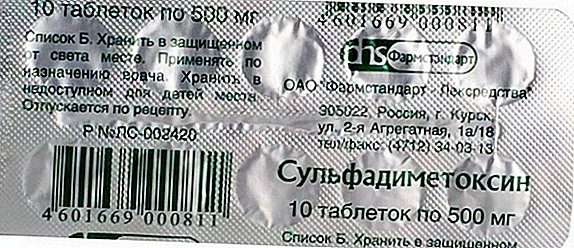
- "Furazolidone" - the agent is administered orally, by direct instillation into the oral cavity in the calculation of 30 ml / kg of animal weight per day. The total duration of therapy is 7 days.
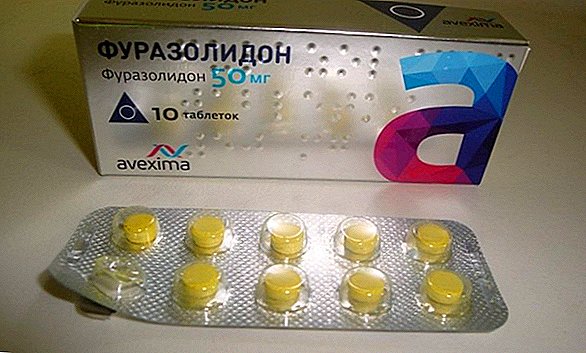
Necrobacteriosis
Necrobacteriosis is an acute infectious disease caused by various strains of the pathogenic microorganism Bacterium necrophorum. As a result of infection, foci of necrotic lesions develop on the lower parts of the extremities, lips, and in the mouth of the animal, accompanied by viscous and sticky secretions with a sharp, specific odor.
As a result of necrobacteriosis in case of untimely treatment, necrotic foci infect the liver, kidneys, lymph nodes and other organs and systems, which leads to the imminent death of the rabbit.
Did you know? Coccidia were discovered in 1674 by the legendary Dutch naturalist Anthony van Leeuwenhoek during rabbit bile microscopy.
Treat sick individuals in a specially equipped place, away from any animals. The affected areas of the body are cleaned of dead tissue and washed with disinfectant solutions: 3% hydrogen peroxide, 3% copper sulfate or 0.1-0.5% potassium permanganate 2-3 times a day.  For the local treatment of purulent foci on the lining of the oral cavity, the affected areas are washed with a 3% solution of blue vitriol or hydrogen peroxide at least 2-3 times a day. To eliminate wounds on the lips, the infected areas are also cleaned of purulent secretions and treated 2-3 times a day with zinc ointment or iodoglycerin.
For the local treatment of purulent foci on the lining of the oral cavity, the affected areas are washed with a 3% solution of blue vitriol or hydrogen peroxide at least 2-3 times a day. To eliminate wounds on the lips, the infected areas are also cleaned of purulent secretions and treated 2-3 times a day with zinc ointment or iodoglycerin.
As a general therapeutic agent, a solution of 30% dibiomycin prepared on the basis of glycerol is intramuscularly injected into the body, and the amount of the main active ingredient in 1 ml should not be less than 30 U. The suspension is administered to rabbits 1 time per day in the thigh area, with a calculation of 20 U / kg.
The duration of dibiomycin therapy depends on the overall effectiveness of the treatment - often the drug is administered until the purulent secretions from the affected areas of the body are completely eliminated. 
How to remove the smell of a rabbit
If after all you did not manage to avoid unpleasant smells from a rabbit, the main thing is not to despair. Today there are many ways by which it is possible to overcome any unpleasant aromas with quality and long-lasting quality. Next, we consider the most popular and effective methods for eliminating pollutants and other hot spots of unpleasant odor.
Cleaning the place
Regular cleaning in the cage is one of the most effective ways to not only eliminate, but also prevent the development of unpleasant odors in the cage. Cell cleaning is carried out regularly, at least 2-3 times a week, along with the replacement of the litter. To do this, all its contents should be thoroughly washed with soapy water, and then dried to dry.
If the rabbit scent could not be eliminated, you need to wipe the cage with a 5% solution of table vinegar or citric acid, and then wash the cage again.  In due course even periodic cleaning in a cage can not rescue from a rabbit smell. After many months at the bottom of the tray brown or white scurf forms. It is a derivative of feces, which have eaten powerfully into the surface of materials, and represents an excellent environment for the development of all kinds of bacteria that produce harsh aromas in the course of their vital activity.
In due course even periodic cleaning in a cage can not rescue from a rabbit smell. After many months at the bottom of the tray brown or white scurf forms. It is a derivative of feces, which have eaten powerfully into the surface of materials, and represents an excellent environment for the development of all kinds of bacteria that produce harsh aromas in the course of their vital activity.
To eliminate it, the tray is soaked for 25-30 minutes in a 5% solution of vinegar or citric acid, and then washed thoroughly.
Important! Any kitchen cleaning products are not recommended for use when cleaning in a cage - they are often highly toxic to rabbits.
It is also worth paying attention to the quality of the litter. Natural fillers made from hay or granulated sawdust are considered the best material for it. Such a litter perfectly absorbs a variety of odorous liquids, as well as almost completely - sharp odors. But despite this, the litter should be changed regularly, at least 2-3 times a week.  If the cause of aromas is excessive activation of the perianal glands, then periodical cleaning will help to cope with the problem. For this rabbit tightly fixed in a horizontal position, and then conduct a thorough inspection of the anus.
If the cause of aromas is excessive activation of the perianal glands, then periodical cleaning will help to cope with the problem. For this rabbit tightly fixed in a horizontal position, and then conduct a thorough inspection of the anus.
On its sides there are paired perianal glands in the form of small peas. A distinct sign of excessive activity of the glands is the appearance of thick brown discharge with a strong odor around them.
Cleaning of the glands is carried out using cotton swabs dipped in clean boiled water, or moisturizing oil for newborns. Remove the flavor will help thorough removal of all plaque around the glands.
The procedure is carried out carefully, as the skin of the rabbit in this area is the most tender. Rough cleaning can cause damage to the skin and subsequent infection of the glands and surrounding tissues.  We clean the glands
We clean the glands
Using the instrument or chemicals
To achieve the absence of unpleasant odors from feces, you can use a special tray: for this, since childhood, the animal is taught to defecate exclusively in it. The process is often no different from the training of domestic cats, since rabbits are characterized by fairly developed intelligence.
Almost always, such a measure gives excellent results, since the main source of odors can be easily disposed of daily.
Modern home appliances will also help to eliminate the fragrance from the rabbit. There are many models of special partitions on the market that destroy all unpleasant odors, so-called ozonizers. Thanks to the electrochemical reaction, the device saturates the air with free ozone molecules, which instantly react with air pollutants and absorb them.
In only 12-24 hours of operation, the ozonizer is able to completely clean the room from unpleasant odors. Such a device is used periodically or constantly, but not more than 1 time in 2-3 days.  Quite often, many pet owners use special tools to eliminate any unpleasant odors in rodent cages and other pets. They are chemically active adsorbers that absorb any excessive moisture, and also have an antibacterial effect.
Quite often, many pet owners use special tools to eliminate any unpleasant odors in rodent cages and other pets. They are chemically active adsorbers that absorb any excessive moisture, and also have an antibacterial effect.
This not only helps prevent the development of unpleasant odors, but also improves the overall sanitary situation.
On the market there are many varieties of such funds, one of the most popular is the drug "Freshness". It is a white, powdery, harmless and odorless substance.
Mix the powder with a clean bedding in the calculation of 10 g / 100 cm cube, after which the mixture is placed in a tray. Такая процедура даёт возможностью практически полностью избежать неприятных ароматов в клетке и резко сократить количество чисток клетки. 
С помощью кормовой добавки
Как упоминалось выше, уменьшить неприятный запах от фекалий кролика поможет и правильный рацион. Прежде всего, питание животного должно состоять из влажных кормов и кормовых добавок. Their role is played by various vitamin premixes that are added to:
- boiled potatoes;
- boiled carrots;
- boiled topinambur;
- white cabbage;
- sugar beets;
- kohlrabi;
- squash;
- pumpkin;
- various not fragrant herbs.

The number of such feed additives must necessarily be at least 60-70% of the total weight of the food of the animal. In this case, his body does not accumulate complex splitting products of other feed, which are the cause of unpleasant odors. Also improve the digestion will help and silage from tops of legumes, carrots, cabbage leaves.
Important! Tomato leaf in any form is dangerous to the body of rabbits. It can cause serious poisoning, even death.
An unpleasant smell is a problem that almost every owner of a decorative rabbit faces. Despite the high cleanliness and low level of natural smell, quite often this animal becomes a source of persistent and unpleasant aroma.
To combat this problem, there are many recommendations of all kinds, but the most effective of them is the timely and proper care of animals.
Video: how to avoid bad smell in a rabbit






